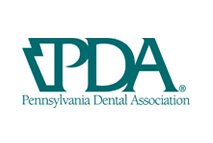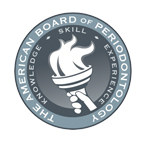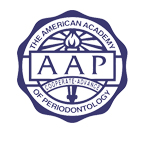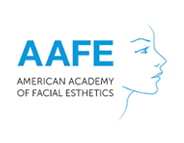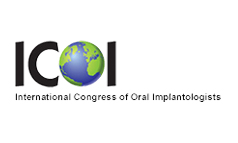
When it comes to our oral health, maintaining healthy gums and strong bone structure is crucial. Unfortunately, factors such as gum disease, trauma, or genetics can affect the gums and bones surrounding our teeth. Fortunately, gum and bone corrective surgery, also known as periodontal plastic surgery, offers a solution to restore oral health and enhance the aesthetics of our smiles. In this blog, we will explore the importance of gum and bone corrective surgery and how it can help you regain a healthy and confident smile.
Understanding Gum and Bone Corrective Surgery
A periodontist performs specialized dental procedures such as gum and bone correction surgery. This skilled dental specialist focuses on diagnosing and treating gum diseases and related conditions. The primary aim of this surgery is to address various issues related to the gums and underlying bone structure, which may have been compromised due to several factors.
Summary
Common Reasons for Gum and Bone Corrective Surgery:
1. Gum Recession:

- When the gum tissue that protects the teeth pushes back or wears away, the tooth roots are exposed.
- Causes include gum disease, aggressive brushing, genetics, poor oral hygiene, and hormonal changes.
- Symptoms include visible tooth roots, tooth sensitivity, gum inflammation, and longer-looking teeth.
- Gum recession can lead to tooth decay, tooth sensitivity, and potential tooth loss if left untreated.
- Treatment options include scaling and root planing, gum grafting, pocket depth reduction, improved oral hygiene, and orthodontic treatment.
- It’s important to seek professional dental care if you have gum recession to prevent further damage and maintain oral health.
2. Gum Augmentation:

- Gum augmentation, also known as gum tissue grafting, is a surgical procedure to treat gum recession or improve the appearance of the gums.
- It involves taking gum tissue from one area of the mouth (often the palate) and transplanting it to the area with gum recession.
- The procedure aims to restore gum health, cover exposed tooth roots, and enhance the overall aesthetics of the smile.
- There are different types of gum grafting techniques, including connective tissue grafts, free gingival grafts, and pedicle grafts.
- The surgery is typically performed under local anesthesia to ensure patient comfort.
- After harvesting the gum tissue, it is carefully transplanted to the recipient site and secured with sutures.
- The healing process takes several weeks, and the graft integrates with the existing gum tissue.
- Post-operative care instructions, such as gentle brushing, using a special mouth rinse, and avoiding certain foods, are provided to promote healing.
- Regular follow-up visits are scheduled to monitor the healing progress and make any necessary adjustments.
3. Crown:

- It is typically performed to create more space between the gum line and the tooth’s crown, allowing for restorative or cosmetic dental treatments.
- Reasons for crown lengthening include fixing a “gummy” smile, preparing for a dental crown or bridge, or accessing decayed or damaged areas of the tooth below the gum line.
- To ensure the patient’s comfort, the treatment is conducted under local anesthesia.
- The dentist or periodontist makes incisions in the gum tissue to access the underlying bone and tooth structure.
- They remove or reshape the excess gum tissue and, if required, adjust the bone level.
- After the procedure, the area is cleaned and sutured, and a protective dressing may be placed over the surgical site.
- Recovery typically takes a few weeks, during which the gums heal and the tooth’s new length is established.
- Post-operative care instructions are provided, which may include pain management, a soft diet, and careful oral hygiene.
- Follow-up visits are scheduled to monitor healing and remove sutures if necessary.
4. Ridge Augmentation:

- It is typically done when the jawbone has experienced significant bone loss or deformities due to tooth extraction, trauma, gum disease, or other factors.
- The procedure aims to create a solid foundation for dental implants or improve the appearance of the jawline.
- Ridge augmentation involves adding bone graft material to the affected area of the jawbone.
- The bone graft material can be sourced from the patient’s bone (autograft), a donor bone (allograft), or synthetic materials (alloplastic).
- The bone graft is placed onto the existing bone, and sometimes a barrier membrane is used to cover the graft and promote bone regeneration.
- Over time, the graft material integrates with the existing bone, resulting in a more stable and natural ridge contour.
- The procedure is typically performed under local anesthesia or conscious sedation to ensure patient comfort.
- Recovery time can vary, but it generally takes several months for the graft to fully integrate and for the ridge to be ready for dental implant placement.
- Post-operative care instructions, including proper oral hygiene and dietary restrictions, will be provided to support healing.
5. Pocket Reduction Surgery:

- Pocket reduction surgery is a surgical procedure performed to treat advanced gum disease (periodontitis) by reducing the depth of gum pockets around the teeth.
- Gum pockets are deep spaces that form between the gums and teeth when the supporting structures are damaged by bacteria and inflammation.
- The surgery aims to remove the bacteria, reduce pocket depth, and facilitate better oral hygiene.
- The procedure is typically performed under local anesthesia or sedation for patient comfort.
- The dentist or periodontist makes incisions in the gum tissue to access the roots of the teeth and underlying bone.
- The infected gum tissue, bacteria, and tartar are thoroughly removed.
- In some cases, the underlying bone may be reshaped to create a more favorable environment for healing.
- The gum tissue is then repositioned and sutured in place to reduce pocket depth and promote proper healing.
- Post-operative care instructions, including oral hygiene practices and dietary restrictions, are provided for optimal healing.
- Regular follow-up visits are scheduled to monitor healing progress and assess the effectiveness of the procedure.
Recovery and Post-Operative Care:

Recovery from gum and bone corrective surgery varies depending on the complexity of the procedure. It is essential to follow the post-operative instructions provided by your periodontist to ensure a smooth recovery. These instructions may include guidelines for oral hygiene, dietary restrictions, and any prescribed medications. Following up with a periodontist will allow them to monitor your progress and make any required changes to your treatment plan.
Conclusion:
Gum and bone corrective surgery offers an effective solution for restoring oral health and enhancing the aesthetics of your smile. Whether you are dealing with gum recession, inadequate gum tissue, or bone loss, a skilled periodontist can help you regain your confidence and maintain a healthy mouth. If you are experiencing any of these issues, consider scheduling a consultation with a periodontist to discuss the potential benefits of gum and bone corrective surgery. Remember, a healthy smile contributes to your overall well-being and boosts your self-esteem. You may get a healthy, pain-free smile with the appropriate information and care. The best Periodontist in Langhorne PA offers the best care.
We hope you have received all the necessary information; for additional information, please visit our blog section or call us at (267) 908-4867.




